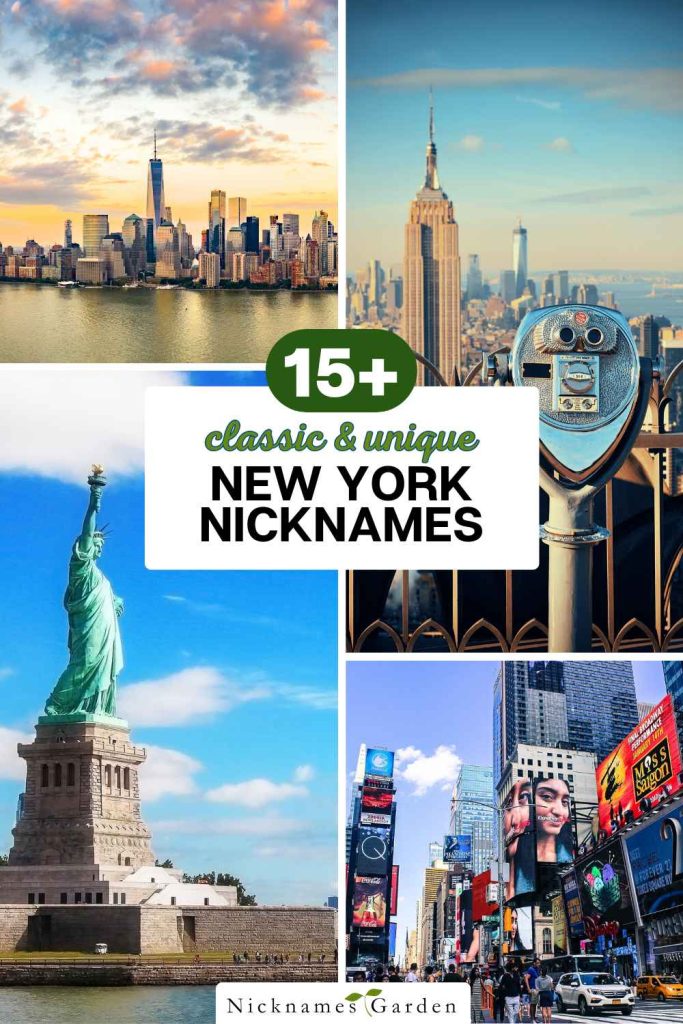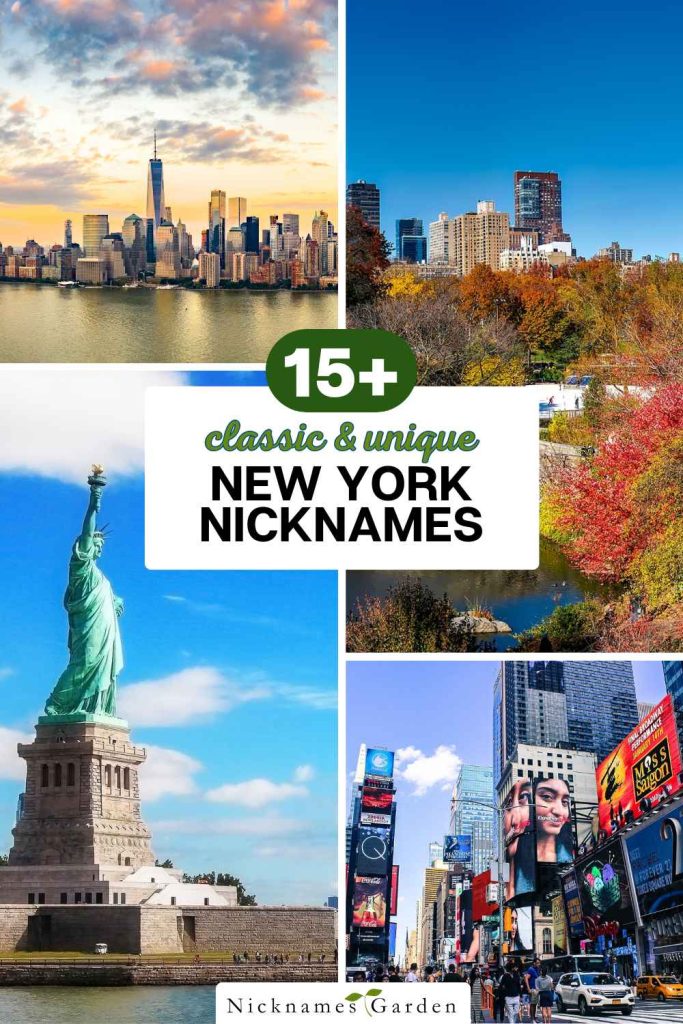New York, known by many names, reflects its rich history and diverse culture. From The Big Apple to Gotham, each nickname tells a unique story.
Join us as we explore the origins and significance of New York’s most famous monikers.
The Big Apple
Origin and History
- Jazz Musicians in the 1920s: The term “The Big Apple” was popularized in the 1920s by jazz musicians who used it to refer to New York City as the ultimate destination for performances and success.
- John J. Fitz Gerald’s Columns: The nickname gained widespread recognition when sports writer John J. Fitz Gerald used it in his columns for the New York Morning Telegraph in the 1920s. Fitz Gerald credited African American stable hands in New Orleans with using the term to refer to New York’s horse racing tracks.
Meaning and Cultural Impact
- Symbol of Wealth and Prosperity: The Big Apple represents the wealth, opportunities, and success that New York City offers. It symbolizes the city‘s allure as a place where dreams can come true.
- Influence in Pop Culture: The nickname has been immortalized in songs, movies, and literature, reinforcing New York’s image as a vibrant and dynamic metropolis. Notable examples include Frank Sinatra’s “New York, New York” and countless references in films and TV shows.
Key Highlights
- Tourism Campaign: The term was revived in the 1970s as part of a successful tourism campaign to boost the city’s image and attract visitors.
- Big Apple Corner: In recognition of Fitz Gerald’s contribution, the corner of West 54th Street and Broadway was officially named “Big Apple Corner” in 1997.
By exploring the origins and cultural significance of “The Big Apple,” we gain insight into how this nickname encapsulates the essence of New York City and its global reputation as a land of opportunity.
Gotham
Origin and History
- Washington Irving’s Use in the 19th Century: The nickname “Gotham” was first used to refer to New York City by the writer Washington Irving in his satirical periodical, Salmagundi, published in 1807. Irving borrowed the name from a village in England known for its legends of wise fools, which he found amusing and fitting for the bustling, chaotic city.
- Connection to Batman Comics: “Gotham” became further ingrained in popular culture through its association with Batman. The dark, crime-ridden Gotham City in the DC Comics universe was modeled after New York City, cementing the nickname’s modern connotations.
Meaning and Cultural Impact
- The Mystique and Darkness Associated with Gotham: The nickname “Gotham” evokes images of a city with a rich, somewhat mysterious past. It suggests an aura of complexity, sophistication, and a touch of darkness, reflecting both the grandeur and the grittiness of New York City.
- Representation in Literature and Media: Over the years, Gotham has appeared in various literary works, films, and television series. Its portrayal ranges from a place of intrigue and opportunity to a backdrop for crime and corruption. This duality adds to the city’s allure and mystique.
Key Highlights
- Gotham in Modern Usage: Today, “Gotham” is commonly used by locals and outsiders alike to refer to New York City. It signifies not just the physical city, but also its cultural and historical layers.
- Gotham Awards: The nickname is also used in naming prestigious events, such as the Gotham Independent Film Awards, which honor independent filmmakers and reflect the city’s influence in the arts.
Exploring the nickname “Gotham” reveals the multifaceted character of New York City, capturing its history, cultural impact, and enduring appeal through a lens of both light and shadow.
The Empire State
Origin and History
- Coined by George Washington: The nickname “The Empire State” is believed to have been coined by George Washington, who referred to New York as the “Seat of the Empire” in a letter to the New York City Common Council in 1784. This reference highlighted New York’s strategic importance and potential for growth.
- Early Economic and Political Importance: Throughout the 19th century, New York’s burgeoning trade, financial industries, and political influence solidified its status as the “Empire State.” The completion of the Erie Canal in 1825 further cemented New York’s role as a commercial hub.
Meaning and Cultural Impact
- Symbol of Ambition and Grandeur: The nickname embodies New York’s ambitions and achievements, reflecting its significant contributions to the nation’s economic and cultural landscape. It signifies the state’s leadership and prominence in various fields.
- The Empire State Building: One of the most iconic symbols of New York City, the Empire State Building, opened in 1931. Its name and status as one of the tallest buildings in the world for decades reinforced the nickname’s association with grandeur and innovation.
Key Highlights
- State Motto: The nickname is also reflected in New York’s state motto, “Excelsior,” which means “ever upward.” This motto underscores the state’s commitment to progress and excellence.
- Historical Celebrations: The nickname has been celebrated through various events and commemorations, including the Empire State Games, an annual Olympic-style competition for amateur athletes from New York State.
“The Empire State” encapsulates New York’s legacy of leadership, ambition, and innovation. This nickname highlights the state’s historical significance and its enduring role as a beacon of progress and opportunity.
The City That Never Sleeps
Origin and History
- Coined in the Early 20th Century: The phrase “The City That Never Sleeps” became popular in the early 20th century, capturing the essence of New York’s relentless energy and around-the-clock activity.
- Frank Sinatra’s Influence: The nickname was immortalized by Frank Sinatra in his iconic song “New York, New York,” released in 1979. Sinatra’s lyrics vividly depict the city’s bustling, nonstop lifestyle, further popularizing the nickname.
Meaning and Cultural Impact
- 24/7 Lifestyle and Vibrancy: The City That Never Sleeps epitomizes New York’s unique characteristic of being constantly alive and active. From late-night diners to 24-hour subway service, the city’s nonstop nature offers endless opportunities for work and play at any hour.
- Influence on Tourism and Perception: This nickname has significantly influenced how people perceive New York, attracting tourists eager to experience its ceaseless excitement. It also reflects the city’s diverse array of entertainment options, from Broadway shows and nightclubs to restaurants and cultural events that cater to night owls and early risers alike.
Key Highlights
- Times Square: Often referred to as “the crossroads of the world,” Times Square is a prime example of the city’s 24/7 nature, with its bright lights, bustling crowds, and continuous flow of activity.
- Nightlife: New York’s vibrant nightlife scene, including iconic venues like Studio 54, The Copacabana, and numerous jazz clubs, embodies the spirit of a city that never sleeps.
Exploring the nickname “The City That Never Sleeps” provides insight into New York’s relentless energy and perpetual motion. This moniker perfectly captures the dynamic, vibrant lifestyle that defines the city and continues to enchant residents and visitors alike.
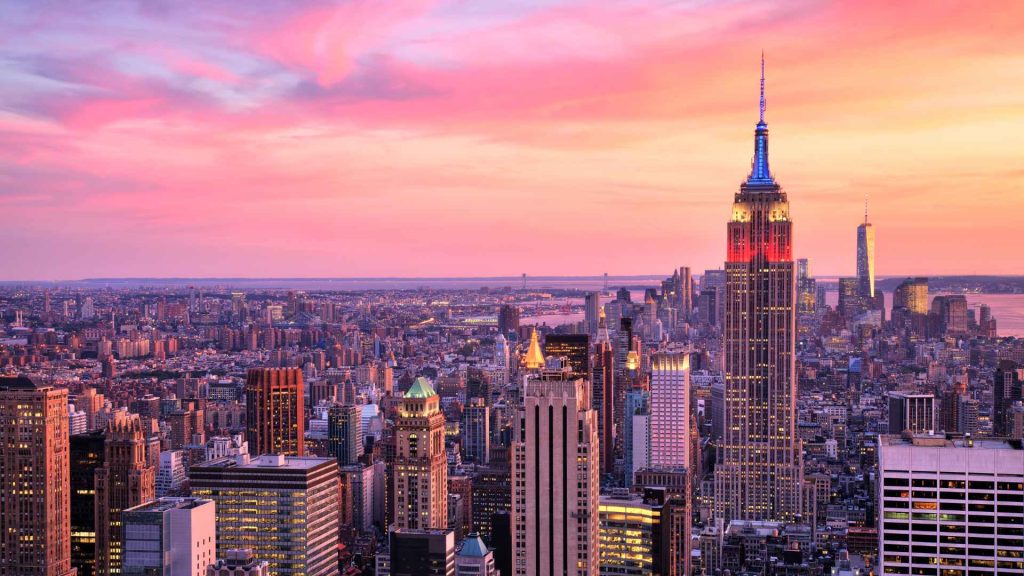
The Capital of the World
Origin and History
- Post-WWII Global Influence: The nickname “The Capital of the World” emerged in the post-World War II era, reflecting New York City’s status as a global powerhouse. As the United States rose to prominence on the world stage, New York became the epicenter of international finance, culture, and diplomacy.
- United Nations Headquarters: The establishment of the United Nations Headquarters in New York City in 1945 further solidified its position as a key player in global affairs. Hosting the UN placed New York at the heart of international diplomacy and decision-making.
Meaning and Cultural Impact
- New York’s Role in International Diplomacy: As home to the United Nations, New York City plays a crucial role in facilitating global dialogue and cooperation. The city hosts numerous international organizations, consulates, and diplomatic missions, making it a hub for international relations.
- Economic and Cultural Hub: New York’s financial markets, including Wall Street, influence economies worldwide. Additionally, its cultural institutions, such as the Metropolitan Museum of Art, Broadway, and the American Museum of Natural History, attract millions of visitors each year, showcasing the city’s diverse and rich cultural heritage.
Key Highlights
- Financial Capital: Wall Street and the New York Stock Exchange are synonymous with global finance, driving economic trends and policies that impact markets around the world.
- Cultural Diversity: New York’s status as a melting pot of cultures further enhances its reputation as the “Capital of the World.” The city’s neighborhoods are vibrant mosaics of different ethnicities, languages, and traditions, contributing to its dynamic cultural landscape.
By examining the nickname “The Capital of the World,” we can appreciate New York City’s unparalleled influence on global finance, culture, and diplomacy. This moniker underscores the city’s pivotal role in shaping international relations and its enduring legacy as a beacon of global interconnectedness.
The Melting Pot
Origin and History
- 19th and 20th Century Immigration Waves: The nickname “The Melting Pot” originated in the late 19th and early 20th centuries, during significant waves of immigration to New York City. Immigrants from Europe, Asia, Latin America, and other regions arrived in droves, seeking new opportunities and better lives. The term gained widespread popularity after the 1908 play “The Melting Pot” by Israel Zangwill, which celebrated America’s ability to assimilate immigrants of diverse backgrounds into a unified culture.
- Ellis Island: Ellis Island, operational from 1892 to 1954, was the entry point for over 12 million immigrants. This historical site is a powerful symbol of the diverse origins of New York’s population.
Meaning and Cultural Impact
- Diversity and Multiculturalism: “The Melting Pot” aptly describes New York’s cultural, ethnic, and linguistic diversity. The city is a vibrant tapestry of different cultures coexisting and influencing each other, creating a unique and dynamic urban culture.
- Influence on Cuisine, Language, and Neighborhoods: The diversity in New York has led to an incredible variety of cuisines, languages, and cultural traditions. Neighborhoods like Chinatown, Little Italy, and Harlem reflect the rich heritage of their residents and contribute to the city’s multicultural identity.
Key Highlights
- Cultural Festivals: New York hosts numerous cultural festivals celebrating its diverse population, such as the Chinese New Year Parade, the Feast of San Gennaro, and the West Indian Day Parade.
- Ethnic Enclaves: Distinct neighborhoods offer glimpses into the various cultures that make up New York, providing residents and visitors with rich cultural experiences. For instance, Jackson Heights in Queens is known for its South Asian community, while Brighton Beach in Brooklyn is famous for its Russian and Eastern European influences.
By delving into the nickname “The Melting Pot,” we uncover the profound impact of immigration on New York City’s identity.
This New York nickname highlights the city’s role as a welcoming and dynamic hub of cultural diversity, where different backgrounds and traditions come together to create a unique and ever-evolving urban landscape.
The Five Boroughs
Origin and History
- Consolidation of NYC in 1898: The nickname “The Five Boroughs” originated with the consolidation of New York City in 1898. This historic event brought together five distinct areas—Manhattan, Brooklyn, Queens, The Bronx, and Staten Island—into a single, unified city. Each borough retained its unique identity while contributing to the greater whole of New York City.
Meaning and Cultural Impact
- Unique Identities of Each Borough: Each of the five boroughs has its own distinct culture, history, and character. This diversity within unity is a defining feature of New York City:
- Manhattan: Known for its iconic skyline, central business district, and cultural landmarks such as Times Square, Central Park, and the Metropolitan Museum of Art.
- Brooklyn: Renowned for its artistic vibe, historic brownstones, Coney Island, and the Brooklyn Bridge.
- Queens: The most ethnically diverse urban area in the world, famous for its varied cuisine, Flushing Meadows-Corona Park, and vibrant neighborhoods.
- The Bronx: Home to Yankee Stadium, the Bronx Zoo, and the birthplace of hip-hop.
- Staten Island: Known for its suburban feel, the Staten Island Ferry, and the Greenbelt’s parks and nature reserves.
Cultural and Social Significance
- Inter-borough Rivalries and Collaborations: The friendly rivalries and collaborations between the boroughs contribute to the city’s dynamic culture. Events like the New York City Marathon and the Five Boro Bike Tour highlight the unity and diversity of the city.
- Cultural Festivals and Parades: Each borough hosts unique festivals and parades that celebrate their distinct heritages, such as the West Indian Day Parade in Brooklyn, the Queens Night Market, and the Bronx Puerto Rican Day Parade.
Key Highlights
- Economic and Demographic Diversity: The economic activities and demographics of each borough vary significantly, reflecting the city’s overall diversity. Manhattan is a global financial center, while Queens is a hub for aviation and logistics due to its proximity to JFK and LaGuardia airports.
- Educational and Cultural Institutions: Each borough boasts its own set of prestigious educational and cultural institutions. For instance, Manhattan is home to NYU and Columbia University, while the Bronx houses the New York Botanical Garden and the Bronx Museum of the Arts.
Exploring “The Five Boroughs” provides a deeper understanding of the multifaceted nature of New York City. This nickname celebrates the unique contributions of each borough to the city’s identity, illustrating how their diverse characteristics collectively shape the vibrant tapestry of New York.
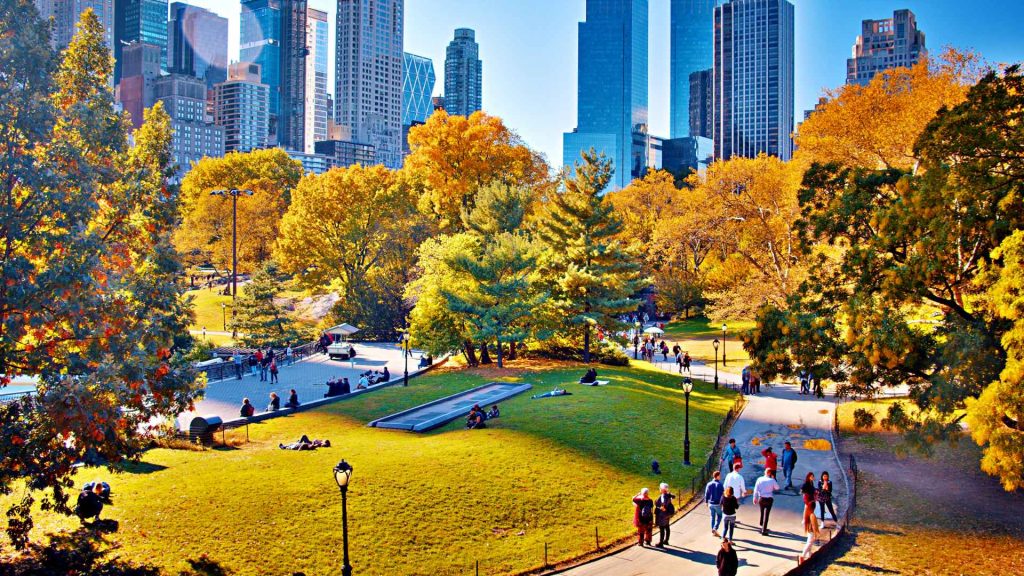
Fun City
Origin and History
- Mayor John Lindsay’s Administration in the 1960s: The nickname “Fun City” was popularized during the tenure of Mayor John Lindsay, who served from 1966 to 1973. Lindsay aimed to revitalize New York City’s image during a period of economic and social challenges by promoting its cultural and recreational offerings.
- Urban Renewal and Cultural Flourishing: Under Lindsay’s leadership, efforts were made to enhance the city’s public spaces, support the arts, and improve quality of life for residents and visitors. These initiatives contributed to the perception of New York as a vibrant, exciting place to live and visit.
Meaning and Cultural Impact
- Urban Renewal and Cultural Flourishing: “Fun City” underscores New York’s reputation as a hub of entertainment, culture, and recreation. The nickname highlights the city’s diverse attractions, from world-class theaters and museums to bustling nightlife and public parks.
- Tourism and Entertainment: This moniker attracted tourists seeking the excitement and cultural richness that New York offers. It emphasized the city’s appeal as a destination for both leisure and artistic exploration.
Key Highlights
- Cultural Institutions: New York City is home to a plethora of cultural institutions that contribute to its “Fun City” status. These include the Metropolitan Museum of Art, the American Museum of Natural History, the Museum of Modern Art (MoMA), and numerous theaters on Broadway.
- Public Events and Festivals: The city hosts a wide array of public events and festivals that celebrate its cultural diversity and vibrant arts scene. Notable examples include the New York Film Festival, the Tribeca Film Festival, and the SummerStage concert series in Central Park.
- Nightlife and Dining: New York’s nightlife is legendary, with a variety of clubs, bars, and live music venues catering to all tastes. The city’s dining scene is equally impressive, offering a vast array of international cuisines and culinary experiences.
Recreational Spaces
- Central Park: As one of the most famous urban parks in the world, Central Park provides a vast green oasis for outdoor activities, concerts, and relaxation.
- Coney Island: Known for its historic amusement parks and beachfront, Coney Island is a quintessential part of New York’s “Fun City” appeal.
- High Line: This innovative park built on a former elevated railway track offers unique views of the city and a space for public art installations and cultural events.
Exploring the nickname “Fun City” reveals how New York has cultivated a vibrant and diverse array of attractions and activities. This moniker highlights the city’s commitment to providing endless opportunities for enjoyment, creativity, and cultural enrichment for both residents and visitors.
The Concrete Jungle
Origin and History
- Popularized by Songs and Media: The nickname “The Concrete Jungle” was popularized through music and media, most notably in the song “Empire State of Mind” by Jay-Z and Alicia Keys. The term paints a vivid picture of New York City’s dense, towering architecture and its bustling, relentless urban environment.
Meaning and Cultural Impact
- Urban Landscape and Skyscrapers: “The Concrete Jungle” refers to New York’s iconic skyline, dominated by skyscrapers and dense construction. It evokes the sense of a city where nature has been replaced by concrete and steel, highlighting the architectural marvels and urban development of New York.
- Perception of New York’s Toughness: The nickname also conveys the challenging and competitive nature of life in New York City. It suggests a place where people must be resilient and resourceful to succeed, reflecting the city’s reputation as a proving ground for ambition and hard work.
Key Highlights
- Iconic Buildings: New York City is home to some of the most recognizable skyscrapers in the world, such as the Empire State Building, the Chrysler Building, and One World Trade Center. These structures symbolize the city’s architectural innovation and economic power.
- Architectural Diversity: Beyond skyscrapers, New York boasts a variety of architectural styles, from historic brownstones in Brooklyn to modernist masterpieces like the Guggenheim Museum. This diversity contributes to the city’s unique urban fabric.
- Green Spaces Amidst the Concrete: Despite its dense urban environment, New York City also offers numerous green spaces, such as Central Park, Bryant Park, and the High Line. These areas provide a respite from the concrete jungle and enhance the city’s livability.
Cultural Representation
- Literature and Film: The “concrete jungle” motif is frequently explored in literature and film, depicting New York as a place of both opportunity and hardship. Movies like “Taxi Driver” and novels like “Bright Lights, Big City” capture the gritty, relentless energy of urban life.
- Art and Photography: Artists and photographers often use the concrete jungle theme to explore the contrasts and complexities of urban existence. Iconic images of New York’s skyline and street scenes highlight the interplay between human activity and the built environment.
Challenges and Innovations
- Urban Challenges: The nickname also brings to light the challenges of urban living, such as overcrowding, noise, and pollution. Addressing these issues requires innovative urban planning and sustainable development strategies.
- Innovative Solutions: New York City has been a leader in urban innovation, implementing projects like the High Line, sustainable building practices, and green infrastructure to enhance the urban environment and improve quality of life.
By delving into the nickname “The Concrete Jungle,” we gain a deeper understanding of New York City’s architectural splendor, its dynamic urban life, and the resilience required to thrive in such an environment.
This moniker captures the essence of a city that is both a marvel of human achievement and a testament to the challenges of urbanization.
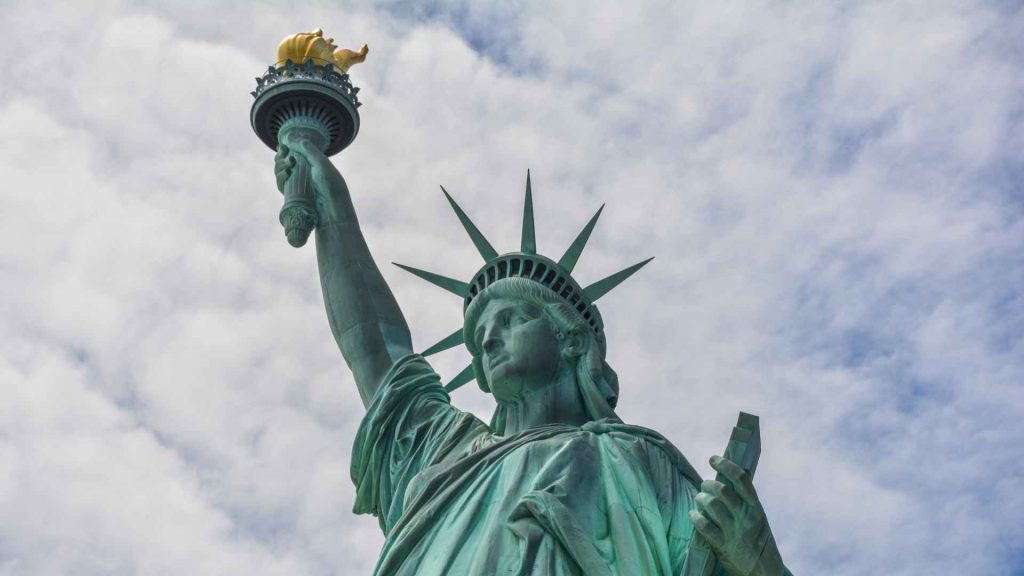
The City of Dreams
Origin and History
- Aspirational Ideals and the American Dream: The nickname “The City of Dreams” reflects New York City’s role as a symbol of the American Dream, where people from all walks of life come to pursue their ambitions and aspirations. This nickname embodies the city’s reputation as a place where dreams can be realized through hard work and determination.
Meaning and Cultural Impact
- Opportunities and Success Stories: “The City of Dreams” highlights New York’s unique position as a land of opportunities. Countless success stories have emerged from the city, ranging from entrepreneurs and artists to immigrants who have achieved their goals. The city’s dynamic and competitive environment fosters innovation and ambition.
- Cultural Representation in Media: This nickname is often represented in movies, TV shows, and literature, portraying New York as a place where anything is possible. Films like “Annie” and “Gangs of New York” showcase the city’s ability to transform lives and make dreams come true.
Key Highlights
- Broadway and the Arts: New York is home to Broadway, the pinnacle of theater and performing arts. Aspiring actors, musicians, and dancers flock to the city, hoping to make it big in the world of entertainment. Broadway’s success stories, from struggling artists to overnight sensations, epitomize the city’s dream-making potential.
- Startups and Innovation: The city’s vibrant startup ecosystem attracts entrepreneurs and innovators from around the globe. Silicon Alley, New York’s tech hub, is a testament to the city’s role in fostering new ideas and businesses. Successful companies like Tumblr, Etsy, and WeWork began their journeys in New York, further cementing its status as a city of dreams.
Cultural Diversity and Inspiration
- Immigrant Success Stories: New York’s rich tapestry of immigrant cultures contributes to its reputation as a city of dreams. Neighborhoods like Chinatown, Little Italy, and Harlem are filled with stories of individuals and families who have overcome adversity to achieve success.
- Icons and Role Models: The city has produced numerous icons and role models in various fields, from politics and finance to arts and sports. Figures like Jay-Z, Lady Gaga, Michael Bloomberg, and Alexandria Ocasio-Cortez have all risen to prominence, inspiring others to chase their dreams.
Institutions and Landmarks
- Educational Institutions: New York is home to some of the world’s most prestigious educational institutions, such as Columbia University, New York University (NYU), and The Juilliard School. These institutions attract students from around the world, offering them opportunities to pursue their academic and artistic dreams.
- Landmarks of Aspiration: Landmarks like the Statue of Liberty and Ellis Island symbolize hope and new beginnings for millions of immigrants who arrived in New York seeking a better life. These iconic sites remind us of the dreams that built the city and continue to shape its future.
By exploring the nickname “The City of Dreams,” we see how New York City has become synonymous with ambition, opportunity, and the realization of aspirations. This moniker captures the spirit of a city that continues to inspire and empower individuals to dream big and achieve their goals.
The Modern Rome
Origin and History
- Comparisons to Ancient Rome’s Influence: The nickname “The Modern Rome” draws a parallel between New York City and the ancient city of Rome, once the center of the world in terms of politics, culture, and power. This comparison emerged in the early 20th century as New York City solidified its position as a global leader in finance, culture, and international affairs.
Meaning and Cultural Impact
- Cultural, Political, and Economic Power: Like ancient Rome, New York City exerts significant influence on a global scale. It is a hub for international business, media, arts, and diplomacy, mirroring Rome’s historical role as a center of civilization.
- Architectural and Cultural Heritage: The nickname also reflects New York’s rich architectural and cultural heritage, drawing comparisons to Rome’s iconic structures and enduring legacy.
Key Highlights
- Financial Center: New York City’s Wall Street is the heart of the global financial system, much like Rome was the economic center of the ancient world. The New York Stock Exchange and NASDAQ drive economic trends and decisions that impact the global market.
- United Nations Headquarters: The presence of the United Nations Headquarters in New York underscores the city’s role in global diplomacy and governance, akin to Rome’s historical political significance.
Architectural Marvels
- Skyscrapers and Iconic Buildings: New York’s skyline, dominated by skyscrapers like the Empire State Building, One World Trade Center, and the Chrysler Building, parallels Rome’s ancient architectural feats such as the Colosseum, the Pantheon, and the Roman Forum. These modern structures symbolize New York’s innovative spirit and its role as a beacon of progress.
- Historical Landmarks: New York is home to numerous historical landmarks that contribute to its cultural prestige. Places like the Statue of Liberty, Ellis Island, and the Brooklyn Bridge serve as enduring symbols of the city’s heritage and its impact on the world.
Cultural Institutions and Arts
- Museums and Galleries: New York City boasts a wealth of cultural institutions that rival the historical collections of ancient Rome. The Metropolitan Museum of Art, the Museum of Modern Art (MoMA), and the American Museum of Natural History are just a few examples of the city’s commitment to preserving and showcasing human achievement and creativity.
- Theater and Performing Arts: Broadway and Lincoln Center stand as modern equivalents to Rome’s theaters and arenas, offering world-class performances that attract audiences from around the globe. These venues highlight New York’s cultural dynamism and its role as a center of artistic excellence.
Global Influence
- Media and Communication: New York is a global media capital, home to major news outlets like The New York Times, CNN, and NBC. This mirrors Rome’s historical role in disseminating information and shaping public opinion.
- Culinary Diversity: Much like Rome, New York is a culinary capital where flavors from around the world converge. The city’s diverse food scene reflects its multicultural population and its status as a melting pot of cultures.
By examining the nickname “The Modern Rome,” we appreciate New York City’s unparalleled influence in finance, culture, and international affairs. This moniker highlights the city’s role as a contemporary counterpart to one of history’s greatest civilizations, emphasizing its enduring legacy and global impact.
The City of Skyscrapers
Origin and History
- Early 20th Century Architectural Boom: The nickname “The City of Skyscrapers” originated in the early 20th century during a period of rapid architectural innovation and construction in New York City. As buildings reached unprecedented heights, New York became renowned for its vertical growth and iconic skyline.
- Advancements in Engineering: Innovations in steel-frame construction and elevator technology enabled architects to design and build taller structures, leading to the proliferation of skyscrapers in the city.
Meaning and Cultural Impact
- Iconic Skyline and Buildings: “The City of Skyscrapers” highlights New York’s architectural prowess and its distinctive skyline, which includes some of the world’s most famous buildings. This nickname emphasizes the city’s reputation for pushing the boundaries of design and construction.
- Influence on Global Architecture: New York’s skyscrapers have set standards and inspired architectural trends worldwide. The city’s skyline is not only a symbol of its economic power but also a testament to human ingenuity and ambition.
Key Highlights
- Empire State Building: Completed in 1931, the Empire State Building held the title of the world’s tallest building for nearly four decades. It remains an enduring symbol of New York’s architectural innovation and is one of the most recognizable structures globally.
- Chrysler Building: Completed in 1930, the Chrysler Building is an Art Deco masterpiece known for its distinctive spire and ornate design. It is a quintessential example of New York’s early skyscraper boom and remains a beloved landmark.
- One World Trade Center: Also known as the Freedom Tower, One World Trade Center was completed in 2013 and stands as the tallest building in the Western Hemisphere. It represents resilience and renewal, symbolizing New York’s strength and unity after the events of September 11, 2001.
Architectural Diversity
- Art Deco to Modernism: New York’s skyscrapers showcase a range of architectural styles, from the Art Deco elegance of the Chrysler Building to the modernist simplicity of the Seagram Building. This diversity reflects the city’s evolving aesthetic and its embrace of different design philosophies.
- Mixed-Use Developments: Many of New York’s skyscrapers are mixed-use developments that combine residential, commercial, and public spaces. This approach maximizes urban space and enhances the city’s livability.
Cultural Representation
- Film and Television: New York’s skyscrapers are iconic backdrops in countless movies and TV shows, reinforcing the city’s image as a bustling metropolis. Films like “King Kong” and “Spider-Man” prominently feature the city’s towering structures.
- Literature and Art: The city’s vertical landscape has inspired numerous works of literature and art. Writers like F. Scott Fitzgerald and artists like Georgia O’Keeffe have captured the grandeur and complexity of New York’s skyline in their creations.
Innovative Urban Planning
- Sustainable Design: In recent years, New York has embraced sustainable design practices in its skyscraper construction. Buildings like the Bank of America Tower and the Hearst Tower incorporate green technologies to reduce their environmental impact.
- Vertical Communities: New developments often include amenities such as parks, schools, and recreational facilities, creating vertical communities that cater to residents’ needs and foster a sense of belonging.
By exploring the nickname “The City of Skyscrapers,” we gain a deeper understanding of New York City’s architectural achievements and its influence on urban design. This moniker celebrates the city’s towering structures, which stand as symbols of innovation, ambition, and the relentless pursuit of excellence.
Concluding The Best New York Nicknames
New York City, with its rich history and vibrant culture, has earned numerous nicknames that reflect its unique character and global significance.
Each nickname tells a different story and captures a distinct aspect of the city’s identity, from its architectural marvels and relentless energy to its cultural diversity and historical influence.
As we explore these monikers—The Big Apple, Gotham, The Empire State, The City That Never Sleeps, The Capital of the World, The Melting Pot, The Five Boroughs, Fun City, The Concrete Jungle, The City of Dreams, The Modern Rome, and The City of Skyscrapers—we gain a deeper appreciation for the multifaceted nature of New York City.
These nicknames not only highlight the city’s past achievements and ongoing evolution but also serve as a testament to its enduring allure and impact on the world stage.
New York continues to inspire, challenge, and captivate those who visit and live within its bounds, solidifying its place as one of the greatest cities in the world.
